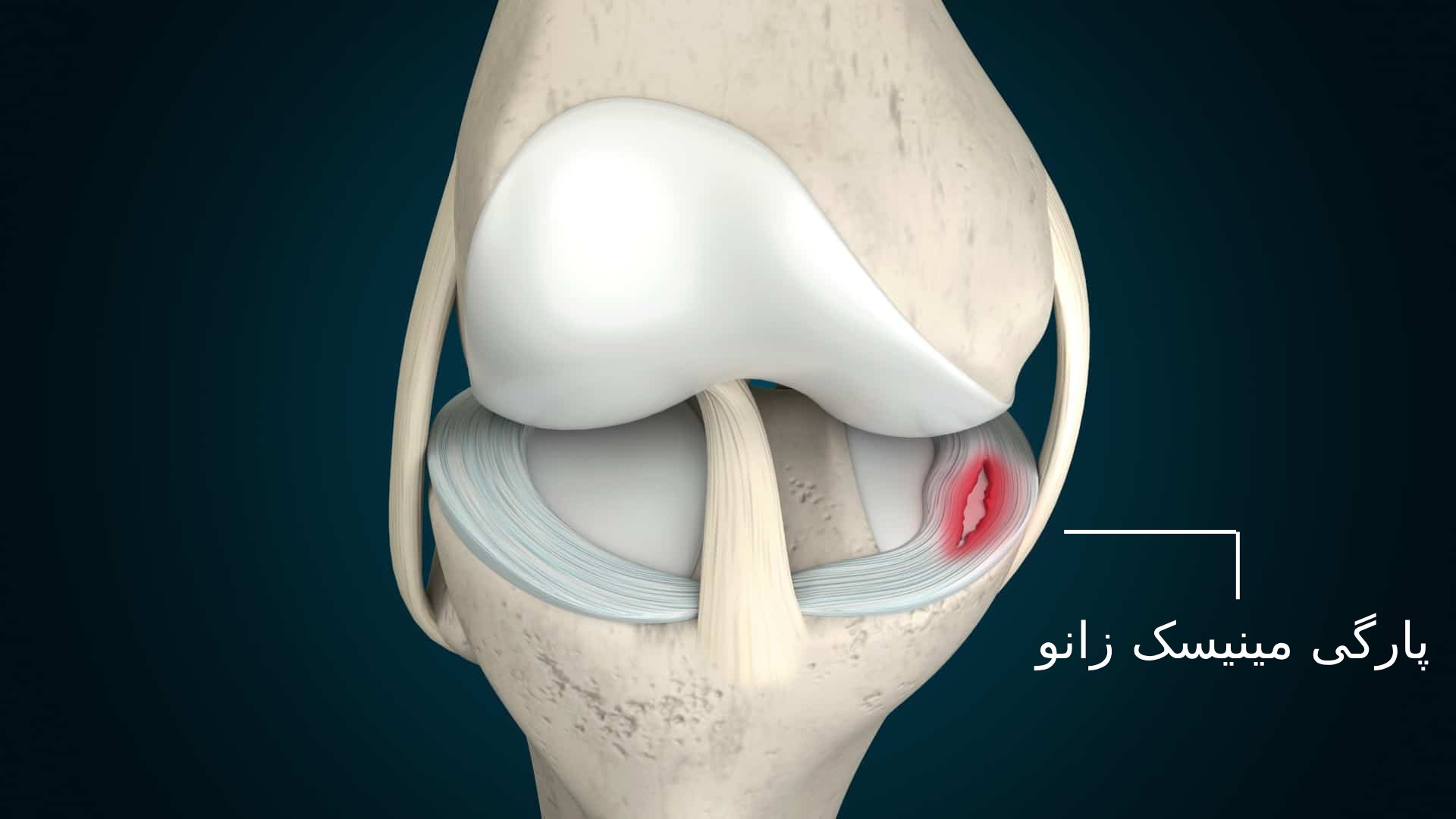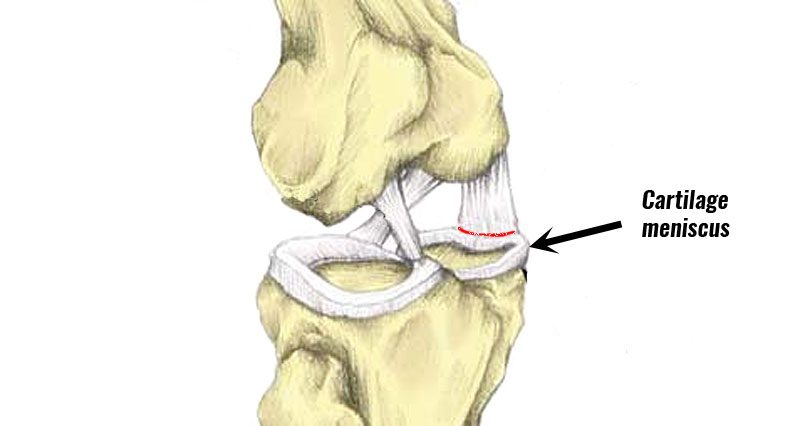Anatomy and Function of the Meniscus

The meniscus is a C-shaped piece of cartilage that acts as a shock absorber and stabilizer within the knee joint. It plays a crucial role in maintaining the integrity and functionality of the knee.
Location and Structure of the Meniscus
The meniscus is located between the femur (thighbone) and the tibia (shinbone) in the knee joint. Each knee has two menisci: the medial meniscus on the inner side of the knee and the lateral meniscus on the outer side. Both menisci are composed of fibrocartilage, a tough and resilient tissue that is different from the smooth hyaline cartilage found in other joints. Fibrocartilage provides strength and flexibility, allowing the meniscus to withstand the forces and stresses placed on the knee during movement.
Functions of the Meniscus
The meniscus performs several essential functions in the knee joint:
- Shock Absorption: The menisci act as cushions, absorbing the impact forces transmitted through the knee during activities like walking, running, and jumping. This helps to protect the joint surfaces from wear and tear.
- Joint Stability: The menisci help to stabilize the knee joint by providing a snug fit between the femur and tibia. They also help to guide the movement of the knee, preventing excessive motion and potential injuries.
- Load Distribution: The menisci distribute the weight load across the knee joint, reducing the pressure on the articular cartilage, which is the smooth lining of the joint surfaces.
- Joint Lubrication: The menisci help to lubricate the knee joint by providing a smooth surface for the joint surfaces to glide over each other.
Types of Menisci
- Medial Meniscus: The medial meniscus is C-shaped and larger than the lateral meniscus. It is attached to the medial collateral ligament (MCL), which provides stability to the inner side of the knee. The medial meniscus has a more limited blood supply, especially in the outer portion, which makes it more susceptible to tears and slower healing.
- Lateral Meniscus: The lateral meniscus is more circular in shape and has a better blood supply than the medial meniscus. It is attached to the popliteal tendon, which helps to stabilize the outer side of the knee. The lateral meniscus is more mobile than the medial meniscus, which makes it less prone to tears.
Blood Supply and Innervation of the Meniscus
The meniscus receives its blood supply primarily from the surrounding tissues. The outer portion of the meniscus, known as the peripheral zone, has a better blood supply, which allows for better healing potential. However, the inner portion, known as the central zone, has a limited blood supply, making it difficult for tears in this area to heal naturally.
The meniscus also has sensory nerves that provide pain sensation. These nerves are mainly located in the peripheral zone and are responsible for transmitting pain signals when the meniscus is injured.
Types of Meniscus Tears

Meniscus tears are classified based on the location and severity of the tear. The most common types of meniscus tears include:
Location of Meniscus Tears
Meniscus tears can occur in different parts of the meniscus.
- Medial Meniscus Tear: This type of tear occurs on the inner side of the knee, closer to the shin bone.
- Lateral Meniscus Tear: This type of tear occurs on the outer side of the knee, closer to the thigh bone.
Severity of Meniscus Tears
The severity of a meniscus tear can range from a small, partial tear to a large, complete tear.
- Grade 1 Tear: This is a small, partial tear that does not involve the full thickness of the meniscus.
- Grade 2 Tear: This is a larger, partial tear that involves the full thickness of the meniscus but does not extend all the way through the meniscus.
- Grade 3 Tear: This is a complete tear that extends all the way through the meniscus, separating it into two pieces.
Common Meniscus Tear Patterns
Meniscus tears can also be classified based on their shape and pattern.
- Bucket-Handle Tear: This type of tear is a vertical tear that extends through the full thickness of the meniscus, creating a flap of tissue that can become trapped in the joint. It is a severe tear and often requires surgery.
- Flap Tear: This type of tear is a horizontal tear that creates a flap of tissue. It can be a partial or full-thickness tear.
- Radial Tear: This type of tear is a radial tear that starts at the outer edge of the meniscus and extends towards the center. It can be a partial or full-thickness tear.
Factors Contributing to Meniscus Tear Types
Several factors can contribute to the development of different meniscus tear types, including:
- Age: The meniscus becomes less elastic with age, making it more susceptible to tears.
- Trauma: A sudden twisting or forceful impact on the knee can cause a meniscus tear.
- Repetitive Stress: Activities that involve repeated bending and twisting of the knee can also contribute to meniscus tears.
- Degenerative Changes: Over time, the meniscus can wear down and become more prone to tears.
Complications of Meniscus Tears
The complications of a meniscus tear can vary depending on the severity of the tear and the individual’s overall health.
- Joint Locking: A large, displaced tear can cause the knee to lock in place, making it difficult to move.
- Pain and Swelling: Most meniscus tears cause pain and swelling in the knee.
- Osteoarthritis: Untreated meniscus tears can lead to osteoarthritis, a degenerative joint disease that causes pain and stiffness.
Causes and Risk Factors for Meniscus Tears

The meniscus, a C-shaped piece of cartilage in the knee joint, acts as a shock absorber and helps to distribute weight evenly. A meniscus tear occurs when this cartilage is damaged, often due to a sudden twisting or impact. Understanding the causes and risk factors for meniscus tears is crucial for prevention and effective treatment.
Sports Injuries
Sports injuries are a leading cause of meniscus tears, particularly in athletes who participate in activities involving pivoting, twisting, and sudden changes in direction. These movements can put significant stress on the meniscus, increasing the risk of tearing.
- Contact sports: Football, basketball, hockey, rugby, and soccer all involve high-impact collisions that can lead to meniscus tears.
- Non-contact sports: Activities like skiing, tennis, and running can also cause meniscus tears, especially when performed incorrectly or with improper technique.
Age-Related Degeneration
As we age, the meniscus naturally deteriorates and becomes more susceptible to tears. This process, known as degeneration, weakens the cartilage and makes it more prone to injury.
- Decreased blood supply: The outer portion of the meniscus receives some blood supply, but the inner portion is avascular, meaning it lacks blood flow. This lack of blood flow hinders the healing process and makes the inner portion more vulnerable to tears.
- Wear and tear: Over time, repetitive stress and everyday activities can contribute to the gradual breakdown of the meniscus, increasing the risk of tearing.
Trauma
Direct trauma to the knee, such as a fall or a car accident, can also cause a meniscus tear. This type of injury often involves a sudden, forceful impact that overwhelms the meniscus’s ability to withstand the stress.
- Direct blows: A direct hit to the knee, such as a tackle in football, can cause a meniscus tear.
- Twisting injuries: A sudden twisting motion, such as when stepping on a uneven surface, can also lead to a meniscus tear.
Impact of Age, Gender, and Genetics
Age, gender, and genetics can influence the likelihood of developing a meniscus tear.
- Age: As mentioned earlier, age-related degeneration plays a significant role in meniscus tears. The risk of tearing increases with age.
- Gender: Men are more likely to experience meniscus tears than women, possibly due to their higher participation in sports and activities that involve high-impact movements.
- Genetics: Family history and genetic predisposition can also contribute to the risk of meniscus tears. Individuals with certain genetic factors may have weaker cartilage or be more prone to injury.
Obesity, Meniscus tear
Obesity is a significant risk factor for meniscus tears. Excess weight puts extra stress on the knee joints, increasing the likelihood of injury.
- Increased stress: Obesity increases the load on the knee joint, putting greater pressure on the meniscus.
- Joint instability: Excess weight can also lead to joint instability, making the knee more prone to injury.
A meniscus tear is a common injury, particularly among athletes, often resulting from sudden twisting or forceful impact. While the Vikings QB position has seen its share of injuries, from the legendary Fran Tarkenton’s knee woes to the recent setbacks of Kirk Cousins, vikings qb have persevered, and the impact of a meniscus tear can vary greatly depending on the severity and location of the injury.
Rehabilitation for meniscus tears often involves physical therapy and, in some cases, surgery, with the goal of restoring joint function and stability.
A meniscus tear, a common knee injury, occurs when the cartilage that cushions the knee joint is torn. This can happen due to sudden twisting or impact, leading to pain, swelling, and difficulty with weight-bearing. Recovery from a meniscus tear depends on the severity and location of the tear.
For guidance on navigating the healing process and returning to activity, consult a comprehensive resource on meniscus tear recovery. Understanding the different treatment options, including physical therapy and surgery, is crucial for achieving optimal recovery and restoring full knee function.
